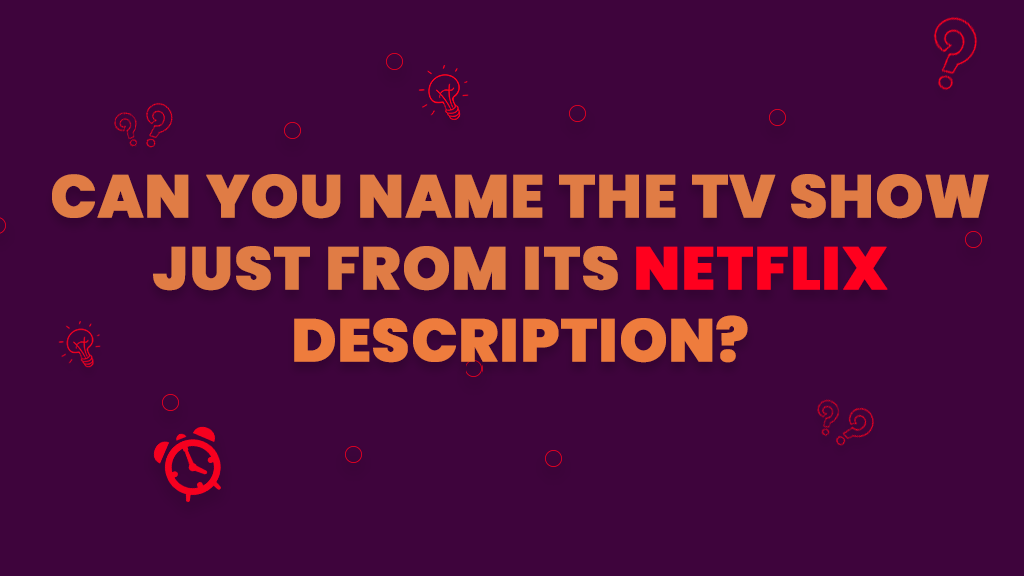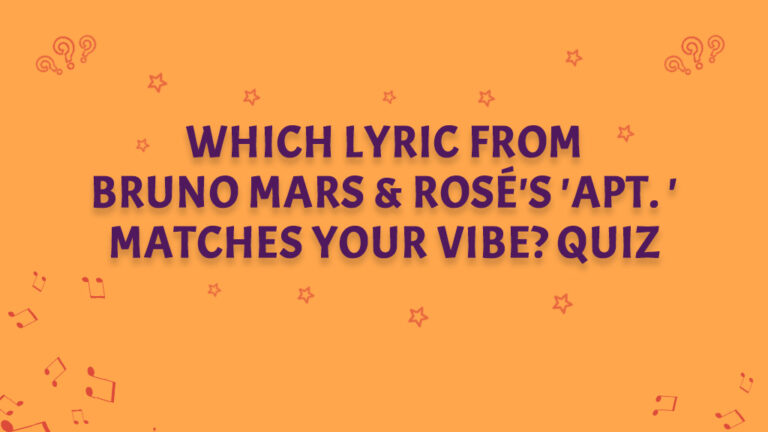❤️It's Trivia, but Sweeter❤️
Can You Name the TV Show Just From It’s Netflix description?

Netflix has revolutionized the way we consume entertainment, offering an extensive catalog of TV shows and movies from across the globe. One of the platform’s most engaging features is its ability to tailor recommendations based on user preferences, and the brief descriptions provided for each show are a big part of that experience. These summaries serve as an enticing preview, giving potential viewers a glimpse into the storyline without giving too much away. Often, these descriptions are the deciding factor in whether or not a user decides to watch a particular show.
When browsing through Netflix, we come across many intriguing synopses that spark our curiosity. They offer just enough information to make us interested, yet not so much that they spoil the experience. As viewers, we often find ourselves reading through these descriptions, trying to determine whether the show aligns with our tastes. It’s an art to craft a description that captures the essence of the series, from its genre to the core of its plot, without revealing too many spoilers. This skillful balance is what makes these brief synopses so important.
A key reason behind Netflix’s success is its ability to provide an incredibly diverse selection of shows, ranging from gripping thrillers and heartwarming comedies to dystopian dramas and science fiction epics. As the global streaming platform continues to grow, it has become home to some of the most popular and critically acclaimed TV shows, many of which have been produced by Netflix itself, and others that are made by international studios. Whether it’s a new series gaining traction or an old classic gaining new fans, Netflix offers something for everyone. The platform also creates an environment where shows can quickly develop cult followings, with viewers passionately recommending their favorite series to others.
In addition to its vast content library, Netflix has changed the way we watch TV shows. With the introduction of “binge-watching,” many viewers are accustomed to consuming entire seasons of shows in one sitting. This shift in viewing behavior has affected the way shows are written, often making them more addictive with cliffhangers and complex storylines that encourage continued watching. These binge-worthy series are further amplified by the short, captivating descriptions that hook the audience from the first sentence. Netflix’s recommendations and descriptions often match viewers with shows that they are most likely to enjoy, based on their watching history and genre preferences.
The genres available on Netflix cater to a broad spectrum of interests. If you’re a fan of true crime, for instance, there’s an array of documentaries and dramas that dive into real-life mysteries. Shows like “Mindhunter,” “The Sinner,” and “Making a Murderer” have captured audiences by offering a mix of intriguing storytelling and a deep dive into the criminal psyche. These series often feature complex characters and examine both the motivations of criminals and the investigative processes that uncover the truth. The descriptions of such shows offer tantalizing glimpses into the cases and characters, which are part of what drives viewers to click play.
On the other hand, Netflix offers lighthearted shows perfect for casual viewing. Romantic comedies like “Master of None” or heartwarming tales of friendship, such as “The Good Place,” offer more uplifting narratives. These shows focus on relationships, self-discovery, and the quirky challenges of everyday life. Netflix’s descriptions for these types of series often emphasize character development and humor, giving just enough of a preview to leave the viewer excited for the light-hearted yet meaningful exploration of life’s ups and downs.
Then there are the high-stakes dramas that keep us on the edge of our seats. From historical dramas like “The Crown” to the nail-biting “Money Heist,” these series are built around complex plots and twists that leave viewers questioning what will happen next. The descriptions for these types of series often provide brief hints of the intrigue without giving away key plot points. They serve as a hook for viewers who love suspense and high drama. Shows such as “Lupin” and “The Witcher” offer action-packed adventures alongside deep storytelling, and their synopses entice viewers with just the right balance of mystery and thrill.
Science fiction and fantasy shows have also found a home on Netflix, appealing to viewers who enjoy exploring new worlds, futuristic technology, and magical realms. Shows like “Stranger Things,” “The Umbrella Academy,” and “Dark” bring elements of the supernatural, time travel, and the unknown into their narratives. These series push the boundaries of reality, often combining elements of suspense, horror, and fantasy. Their descriptions, carefully crafted to give only a taste of the otherworldly plots, encourage viewers to dive into a world that is both familiar and unknown. The intriguing plots are often steeped in mystery, which is exactly what makes these types of shows so popular.
Another genre that has found a large following on Netflix is the documentary. Real-life stories, true crime, and historical events are brought to life with detailed storytelling in shows like “Tiger King,” “Making a Murderer,” and “Our Planet.” These documentaries offer compelling narratives that are not only informative but also deeply engaging. The synopses of these documentaries provide viewers with just enough information to pique their curiosity, offering insight into real-world events or individuals that will spark an emotional response.
One of the main challenges for Netflix is how to stand out in an increasingly crowded streaming market. With so many platforms offering similar content, a captivating description can be the difference between a viewer choosing to watch one series over another. A well-written description can immediately communicate the tone and theme of a show, whether it’s a lighthearted comedy, a heart-pounding thriller, or a deep, emotional drama. Netflix has honed the art of these short summaries to such an extent that they not only describe the show’s genre and basic plot but also give us a hint of the emotional journey the show promises to take us on.
The role of descriptions goes beyond simply informing the viewer about the show’s plot. They also help set the tone for the entire viewing experience. For instance, the description of a true crime documentary might emphasize the chilling aspects of the case, highlighting the gravity of the events that transpired. Meanwhile, a description of a comedy series might convey the light-hearted nature of the show by mentioning its humorous character dynamics or amusing scenarios. These descriptions create an emotional connection, setting expectations for the type of experience the viewer is about to embark on.
For many viewers, the Netflix description becomes a deciding factor in their viewing choices. In a world filled with endless entertainment options, having an easily digestible summary that hints at the plot’s best qualities is essential. The beauty of Netflix’s content library lies in its diversity—there’s always something for everyone, no matter the mood, age, or genre preference. The descriptions help to cater to this variety, offering snapshots of the stories waiting to be discovered.
In summary, Netflix’s skillful use of short, enticing descriptions plays an essential role in drawing viewers into the platform’s wide array of content. With millions of subscribers worldwide and an ever-growing selection of original and licensed TV shows, the need for effective descriptions has never been greater. The carefully worded synopses not only capture the essence of each series but also spark curiosity, turning casual browsers into committed viewers. Whether it’s a thrilling crime drama, a heartfelt romantic comedy, or a thought-provoking documentary, Netflix’s TV show descriptions are an essential part of the viewing experience, helping people discover their next favorite show with just a few lines of text.



